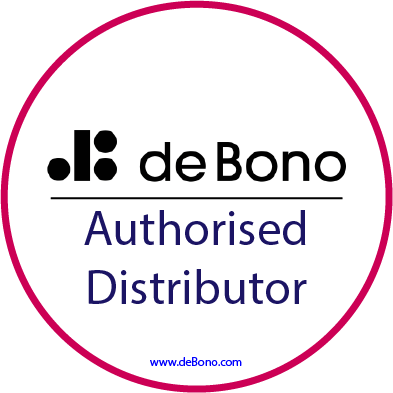Richard Morris, Accredited Trainer
Regulatory writing is essential in ensuring compliance and safety, but it comes with its own set of challenges!
We spoke to Richard Morris, a Writing Dynamics™ trainer at Indigo, about some of the common regulatory writing issues faced by our clients. He said, “we should never underestimate the impact that well written, high-quality regulatory documents can make.
Low quality, overcomplicated and poorly written documents may lead to rejection of regulatory approvals. In turn, this can lead to launch delays, extra costs and compliance risks. Writing Dynamics™ assists you, as the author, to consciously manage and control your document lifecycle.”
He also suggested, “when considering your document, you may want to consider these questions to overcome the most common regulatory writing issues:
- Will my story grab the reader’s attention and keep them engaged?
- How clear is my story?
- Have I avoided complexity?
- What is the purpose and impact I/we are looking to make?
- Where we have multiple contributions or authors, do we have a coherent tone of voice?”
Common regulatory writing issues:
- Dry, technical content that isn’t captivating.
- Lack of storytelling.
- Information overload.
- Repetitiveness.
- Formal, constrained tone.
 Dry, technical content that isn’t captivating
Dry, technical content that isn’t captivating
Regulatory writing prioritises accuracy, clarity, and adherence to regulations and guidelines – often resulting in a dry and technical writing style that lacks creativity or engaging elements. It also places a strong emphasis on risk assessment, safety data and compliance with regulations – essential aspects that may not captivate the readers’ interest or evoke excitement. To overcome dry, technical content that isn’t captivating, you need to:
- Sound like the expert you are – There is a common misconception that you need to be an expert or have years of experience to write about a particular regulatory topic. The truth is you just need to sound like one. Writing Dynamics™ will give you tools so that your document is coherent, has a logical flow and progression – aiding your reader to clearly understand the reasoning to your paper. With clarity comes simplicity, so if your reader understands and wants to read what you’ve written, you’ll ‘sound like the expert you are!’
- Keep it simple – Simplicity is the key to outstanding regulatory writing. Simple well-chosen words may be all you need, to get even your most complex message across. By lowering the density of writing, i.e. reducing the amount of long words, it makes it easier for your reader to read, reason with and remember what you are writing, and of course respond.
- Challenge long words – Words must earn their place and too many long, non-technical words make it harder for the reader to follow your message. Writing Dynamics™ provides a process that ensures you create clear and understandable documents, in the first draft – clearing the ‘fog’ to make it easier for the reader.
 Lack of storytelling
Lack of storytelling
Regulatory writing typically focuses on factual information, scientific data, and technical details, often devoid of storytelling or narrative elements – making the content less engaging and failing to create an emotional connection with readers. It’s important to note that the primary goal of regulatory writing is to ensure compliance, accuracy and safety, rather than to entertain or engage readers.
Regulatory writers must strike a balance between meeting regulatory requirements and making the content as accessible and readable as possible, within the constraints they face. To ensure your writing takes your reader on a journey:
- Grab the reader’s attention – Regulatory writers should focus on creating a story that is easily understood from the start to the finish. If your reader does not understand what you have written and your ideas are not clearly defined – perhaps you shouldn’t have written anything!
Regulatory topics must be supported by objective evidence that underpins the whole document. Tell a convincing story with fully supported evidence – having key benefits at the start, will really help grab the readers’ attention. - Avoid too much complexity – You cannot avoid some complexity, but too much may prompt your reader to question your results. Simplicity in writing means knowing your purpose and intent, this focus helps you convey your message as clearly as possible. Tell the story in a straightforward way, e.g “In March 2023 we tested X to look for Y, the test was successful. This concludes that it’s nontoxic and applicable for food contact use.”
 Information overload
Information overload
Regulatory documents must provide comprehensive and detailed information to meet regulatory requirements – resulting in lengthy documents filled with dense text, tables and figures, which can be overwhelming and tiring to read. One of the best ways to overcome information overload is to create visual appeal and impact:
- Ensuring conclusive, reliable and well researched writing – One way of achieving textbook writing, is by editing your document for content. The Editor’s Six Obsessions™, taught on Writing Dynamics™, helps you edit for ‘Attention, Energy and Appeal’.
- Visual appeal is as important as the content – Most regulatory documents are written within standard formats or templates. Ensure it has headers and footers, tables, graphs and headings. Four ways to improve your layout could be to widen margins, vary paragraph lengths, add value-based headings, and include graphics.
Repetitiveness
Regulatory documents often involve repetitive information, such as standard operating procedures, safety data or regulatory disclosures – making the content feel monotonous and redundant. Here are a couple of hints and tips to help you prevent this when:
- Crafting your document – No matter what you are writing, you need to craft your document in an easy to understand and simple way. This will enhance its appeal and make it more applicable to a wider audience and multiple readers.
- Cross referencing – Too much repetition is far from ideal. Decide on the best logical place for cross referencing and relate to it only where there is a direct link or relationship. As experts from various regulatory bodies may be your wider audience, they may start their review at different parts of the document, looking for the part that relates to their expertise.
 Formal constrained tone
Formal constrained tone
Regulatory documents typically require a formal tone and specific terminology to convey information accurately and unambiguously. The use of jargon, legal language and technical terms can make the writing seem impersonal and unexciting. You can make it easier for your ready by:
- Presenting a coherent voice – More and more, through collaborative writing, we see the need for multiple authors. Where this occurs, your document needs a ‘one voice’ feel. Differing styles may lack the structure, meaning and cohesion you are looking for. Writing Dynamics™, by its application, helps support that ‘one voice’ approach and enable contributors to collaborate from the outset.
- Thinking about sentence length – A combination of long sentences, with long words, makes it tough for your reader. By varying sentence length, you can control and manage the reader’s attention – as we tend to talk in shorter sentences, try to write the way you talk.
More about Writing Dynamics™
Learn the secrets of how to achieve written skills of the highest quality, while saving time, by following a special system developed and used by professional writers.
Our professional writing trainers guide you through each step, using business documents that you’ve written. This means you see the immediate impact to your own regulatory documents, as well as proposals, reports, briefings, emails, project scopes, in fact any document you write.
- Public workshop calendar.
- Enquire about in-house training.
- Find out more about our training for trainers.

More about Richard Morris Richard is an accredited Think on Your Feet®, Writing Dynamics™, Lateral Thinking and Six Thinking Hats® trainer and has delivered these workshops to numerous clients.
From an organisational development context, he has created and implemented a new leadership behavioural framework and set of associated flagship leadership development programmes.



